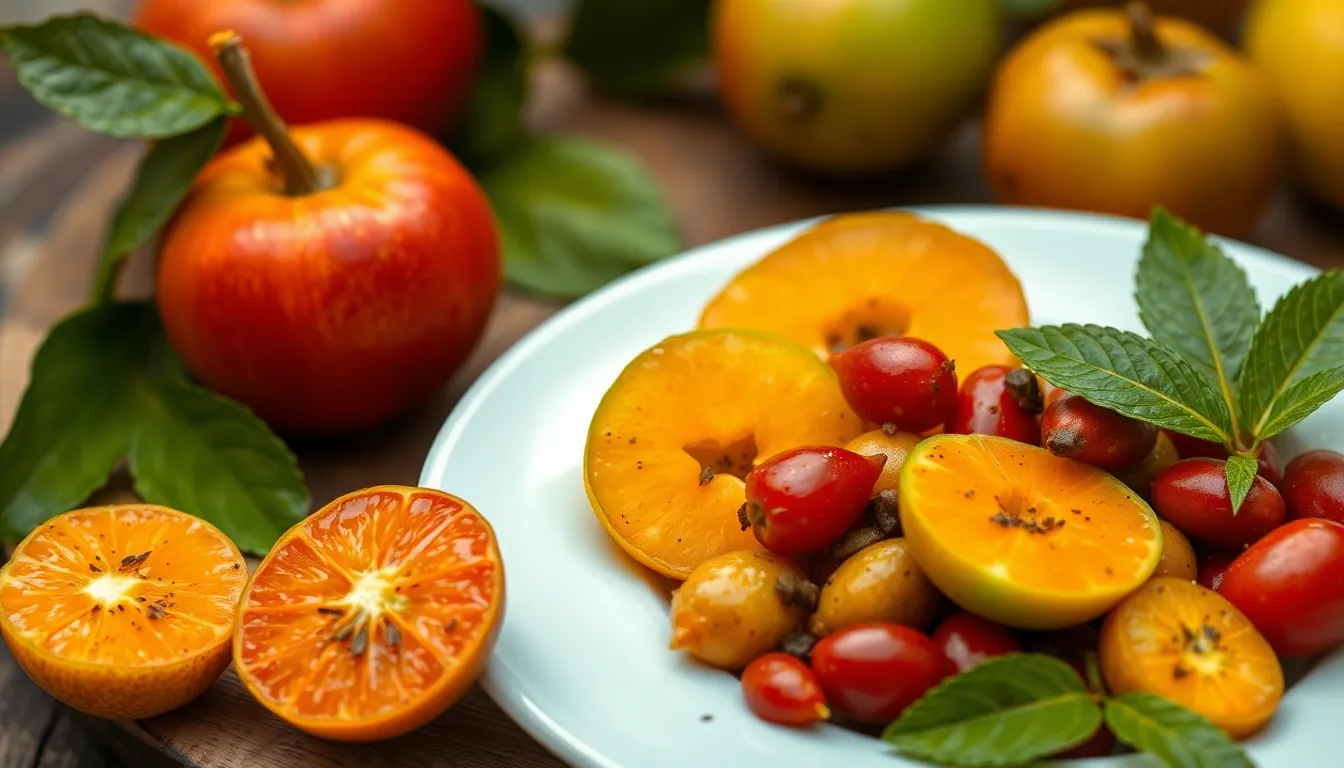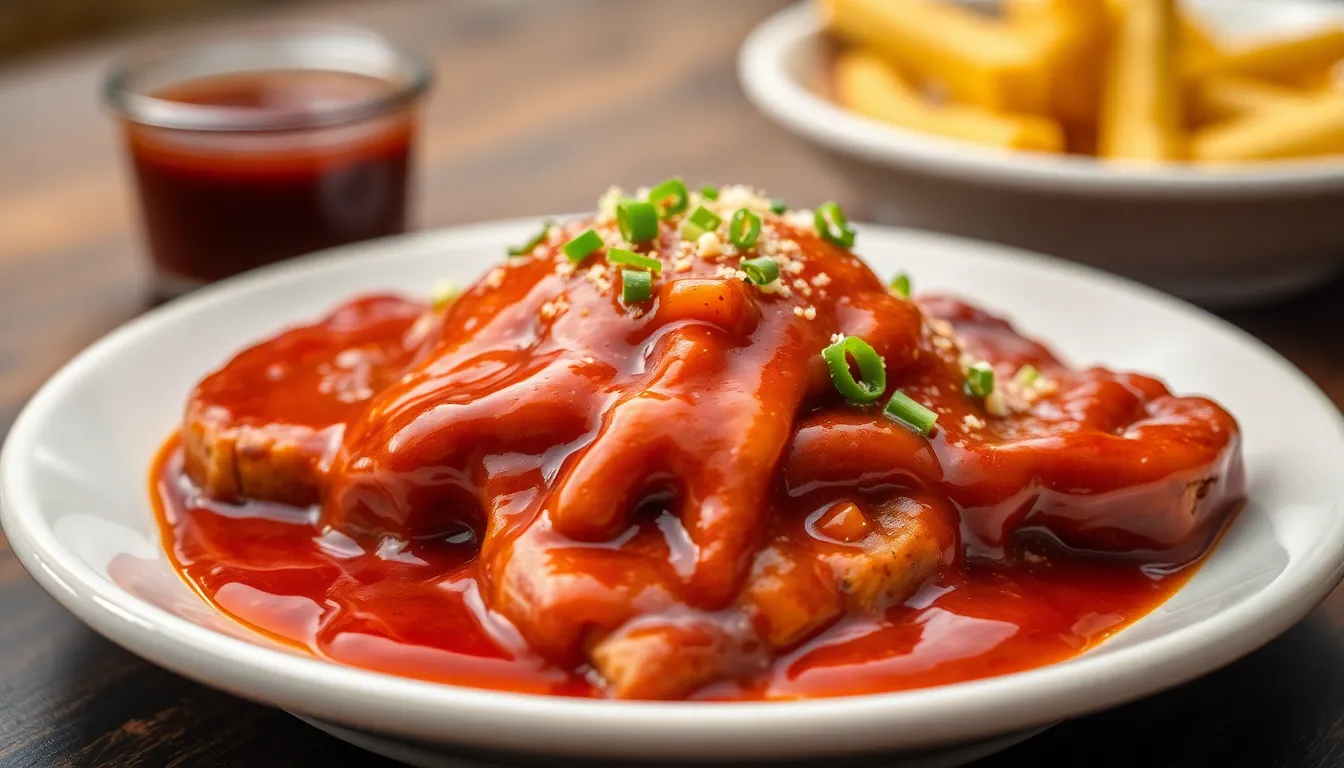Fruits in Indian Cuisine: Spices and Flavors to Explore
Introduction
Indian cuisine is a vibrant tapestry woven with a plethora of flavors, textures, and colors. Among the most cherished elements of this culinary landscape are fruits, which not only add natural sweetness but also bring a refreshing contrast to spicy and savory dishes. Fruits in India are celebrated not just for their taste but also for their health benefits and versatility.
Incorporating spices into fruit dishes elevates their flavors, creating a harmonious blend that tantalizes the taste buds. The intricate balance between the sweetness of fruits and the spiciness of Indian spices is a hallmark of Indian cooking. The purpose of this article is to explore various fruits used in Indian cuisine, along with the spices that complement them, offering insights that encourage you to experiment in your own kitchen.
Section 1: Overview of Indian Fruits
1.1 Common Fruits in Indian Cuisine
- Mango: The king of fruits, revered for its sweetness and juicy texture, especially during the summer months.
- Banana: A staple fruit, often used in both savory and sweet dishes, known for its creamy texture.
- Pomegranate: Bursting with tiny juicy seeds, pomegranates add a delightful crunch and tartness.
- Guava: A tropical fruit that brings a unique sweet and slightly tangy flavor to dishes.
- Papaya: Known for its soft texture and sweet taste, papaya is often used in salads and desserts.
1.2 Seasonal Fruits and Their Uses
India’s diverse climate allows for a variety of seasonal fruits to flourish throughout the year. Each season brings its own bounty, making it essential to use fresh, seasonal fruits for the best flavor and nutritional value. For example, summer is the season for mangoes, while winter features seasonal fruits like oranges and apples.
Utilizing seasonal fruits not only enhances the taste of your dishes but also supports local farmers and promotes sustainable eating practices. Here are a few examples:
- Summer: Mango, Watermelon, Lychee
- Monsoon: Jamun, Custard Apple
- Winter: Apples, Oranges, Grapes
Section 2: Spices that Complement Fruits
2.1 Overview of Indian Spices
Indian spices are the heart and soul of the country’s cuisine. Each spice has its unique flavor profile that contributes to the overall taste of a dish. When paired with fruits, these spices help to balance the natural sweetness, offering a contrast that enhances the dish’s complexity.
The importance of spices in Indian cooking cannot be overstated. They not only add flavor but also bring their own health benefits, making the combination of fruits and spices a powerhouse of nutrition.
2.2 Key Spices to Pair with Fruits
| Spice Name | Flavor Profile | Fruits that Complement the Spice |
|---|---|---|
| Cardamom | Sweet, floral | Mango, Banana |
| Cumin | Earthy, nutty | Pomegranate, Guava |
| Black Salt | Salty, savory | Watermelon, Papaya |
| Turmeric | Earthy, bitter | Mango, Apple |
| Chili Powder | Spicy, pungent | Pineapple, Melon |
Section 3: Popular Indian Fruit Dishes
3.1 Refreshing Fruit Chaat
Fruit chaat is a popular street food in India, known for its explosion of flavors and textures. This dish typically combines various chopped fruits with spices, making it a refreshing and nutritious snack.
Ingredients:
- 2 cups mixed fruits (mango, pomegranate, banana, apple)
- 1 tsp chaat masala
- 1/2 tsp black salt
- 1 tsp lemon juice
- Fresh mint leaves for garnish
Preparation:
- Chop the fruits into bite-sized pieces and place them in a large bowl.
- Add chaat masala, black salt, and lemon juice. Toss gently to combine.
- Garnish with fresh mint leaves and serve chilled.
Suggested spices like chaat masala and black salt elevate the flavor profile, making this dish a perfect blend of sweet and tangy.
3.2 Aam Panna (Green Mango Drink)
Aam Panna is a refreshing drink made from raw mangoes, perfect for combating the summer heat. This drink combines tanginess with a hint of sweetness, thanks to the spices used.
Recipe:
- 2 raw mangoes
- 1/4 cup sugar (adjust to taste)
- 1 tsp roasted cumin powder
- 1/2 tsp black salt
- Water as needed
Preparation:
- Boil the raw mangoes until soft. Allow them to cool and then peel.
- Blend the mango pulp with sugar, roasted cumin powder, and black salt.
- To serve, mix the pulp with water and adjust the sweetness; serve chilled over ice.
The spices in Aam Panna not only add flavor but also help in digestion, making it a healthy summer beverage.
3.3 Fruit Raita
Fruit raita is a cooling yogurt-based side dish that pairs perfectly with spicy Indian meals. It balances the heat with its creamy texture and fruity flavors.
How to Make Fruit Raita:
- 1 cup yogurt
- 1 cup mixed fruits (like pineapple, pomegranate, and banana)
- 1/2 tsp roasted cumin powder
- 1/2 tsp sugar (optional)
- Fresh coriander for garnish
Preparation:
- Whisk the yogurt until smooth, adding sugar if desired.
- Fold in the chopped fruits and roasted cumin powder gently.
- Garnish with fresh coriander and serve chilled.
The yogurt provides probiotics while spices like roasted cumin enhance the raita’s flavor, making it a nutritious complement to any meal.
3.4 Kheer with Seasonal Fruits
Kheer is a traditional Indian dessert that can be made even more delightful with the addition of seasonal fruits. This creamy rice pudding is often flavored with cardamom and garnished with nuts.
Description of Fruit Kheer: The base of kheer is usually made with rice or vermicelli cooked in milk with sugar and flavored with cardamom.
Spices that Elevate the Taste: Adding fruits like mango or banana enhances the kheer’s sweetness and texture while spices like cardamom provide warmth and aroma.
Section 4: Health Benefits of Combining Fruits and Spices
4.1 Nutritional Value of Common Fruits
Fruits are packed with essential vitamins, minerals, and antioxidants. Here’s a quick look at the nutritional value of common fruits used in Indian cuisine:
- Mango: Rich in Vitamin A and C, iron, and antioxidants.
- Banana: High in potassium, Vitamin B6, and fiber.
- Pomegranate: Excellent source of Vitamin C, K, and fiber.
- Guava: Packed with Vitamin C, fiber, and folate.
- Papaya: Contains enzymes that aid digestion, along with Vitamins A and C.
4.2 Health Benefits of Common Spices
Many spices commonly used in Indian cooking have significant health benefits:
- Cardamom: Known to aid digestion and has anti-inflammatory properties.
- Cumin: Boosts metabolism and aids in digestion.
- Black Salt: Contains trace minerals and is considered beneficial for digestion.
- Turmeric: Contains curcumin, known for its anti-inflammatory and antioxidant effects.
- Chili Powder: Boosts metabolism and has pain-relieving properties.
Conclusion
The interplay of fruits and spices in Indian cuisine creates a unique culinary experience that excites the palate while providing numerous health benefits. The combination of sweet, savory, and spicy flavors is not only delicious but also a celebration of the diverse produce available in India.
As you explore the world of Indian cooking, don’t hesitate to experiment with different fruit and spice combinations. Whether you’re making a refreshing chaat or a rich kheer, the right spices can take your fruit dishes to the next level. Share your favorite fruit and spice combinations in the comments below, and let’s inspire each other in our culinary adventures!
Additional Resources
- Refreshing Fruit Chaat Recipe
- Aam Panna Recipe
- Fruit Raita Recipe
- Kheer with Seasonal Fruits Recipe
- Suggested Indian Cookbooks for Further Exploration




